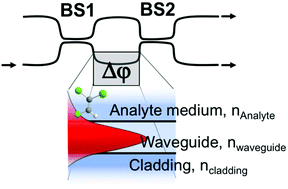Chem/bio sensing with non-classical light and integrated photonics
Abstract
Modern quantum technology currently experiences extensive advances in applicability in communications, cryptography, computing, metrology and lithography. Harnessing this technology platform for chem/bio sensing scenarios is an appealing opportunity enabling ultra-sensitive detection schemes. This is further facilliated by the progress in fabrication, miniaturization and integration of visible and infrared quantum photonics. Especially, the combination of efficient single-photon sources together with waveguiding/sensing structures, serving as active optical transducer, as well as advanced detector materials is promising integrated quantum photonic chem/bio sensors. Besides the intrinsic molecular selectivity and non-destructive character of visible and infrared light based sensing schemes, chem/bio sensors taking advantage of non-classical light sources promise sensitivities beyond the standard quantum limit. In the present review, recent achievements towards on-chip chem/bio quantum photonic sensing platforms based on N00N states are discussed along with appropriate recognition chemistries, facilitating the detection of relevant (bio)analytes at ultra-trace concentration levels. After evaluating recent developments in this field, a perspective for a potentially promising sensor testbed is discussed for reaching integrated quantum sensing with two fiber-coupled GaAs chips together with semiconductor quantum dots serving as single-photon sources.

- This article is part of the themed collection: Recent Review Articles


 Please wait while we load your content...
Please wait while we load your content...